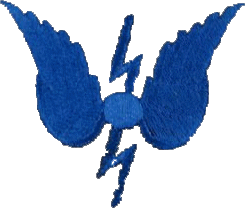|
|
|
|
|
DATE OF DESIGN |
|
The dates of design shown below start in 1921 and finish in 1930, so the overall set can be considered as a 1930 transmitter.
1. TX 3G L/F - 1921
2. TX 3G Low Power - 1924
3. TX 3F H/F - 1928
4. TX 6G - 1930
5. TX 6D - 1928 |
|
FREQUENCY RANGE |
|
1. TX 3G L/F - 75 to 500 kc/s.
2. TX 3G Low Power - 60 to 500 kc/s.
3. TX 3F H/F - 4000 to 20000 kc/s.
4. TX 6G - 100 to 670 kc/s.
5. TX 6D - 77 to 500 kc/s. |
|
POWER SUPPLIES |
|
1. TX 3G L/F - 20kW Alternator. Filament supply - 3kW Alternator.
2. TX 3G Low Power - 3kW Alternator. Filament supply - 3kW Alternator.
3. TX 3F H/F - 20 kW Alternator. Filament supply - 3kW Alternator.
4. TX 6G - 2O kW Alternator.
5. TX 6D - 20V Battery. |
|
RANGE IN MILES |
|
1. TX 3G L/F - 1500.
2. TX 3G Low Power - 100.
3. TX 3F H/F - World wide at times.
4. TX 6G - 150.
5. TX 6D - 50. |
|
TYPE OF SET (VALVES USED) |
|
1. TX 3G L/F - 5.
2. TX 3G Low Power - 2.
3. TX 3F H/F - 4
4. TX 6G -
5. TX 6D - |
|
WAVEFORM |
|
1. TX 3G L/F - CW and ICW.
2. TX 3G Low Power - CW and ICW.
3. TX 3F H/F - ICW.
4. TX 6G - SPARK.
5. TX 6D - SPARK. |
|
METHOD OF PRODUCING OSCILLATIONS |
|
N/K or N/A |
|
WHERE USED/FITTED |
|
Type 36S. It is the main transmitter in heavy ships and all modern (1930) cruisers. It is being replaced by the Type 48. The transmitter circuits of the Type 36S are carried in five VALVE panels which face the power boards. The SPARK attachment, Transmitter 6G, is built into the space formerly completely occupied by the smoothing condensers, which have now been redesigned to occupy a smaller space in the same panel. The emergency set, Transmitter Type 6D is fitted inside the cage. The switches necessary for the control of the set are mounted on a special panel "Board 'G' Controlling" which is fitted within easy reach of the operator in the C.R.R. |
|
ASSOCIATED WAVEMETER |
|
1. TX 3G L/F - 1492B or G9.
2. TX 3G Low Power - 1492B or G9.
3. TX 3F H/F - G7 and G8.
4. TX 6G - 1492B or G9.
5. TX 6D - 1492B or G9. |
|
FURTHER READING |
|
|
|
IMAGES, PHOTOS, DOCUMENTS, SCHEMATICS ETC.(Click images to enlarge) |
|
|
|
NOTES. |
|
This was the most powerful transmitter in the Fleet.
The type 36S (like the Type 35S before it) was a complicated set! It comprised of five parts (one less than the Type 35S), with three parts being VALVES and the other two SPARK High and SPARK Low frequency.
Under Further Reading see Continuous Waves file. When set to operate in the VALVE mode, this set was capable of emitting either "C.W." , "T.T. Double Pulse" or "T.T. Single Pulse". The "T.T." stood for 'Tonic Train' or "I.C.W." (Interrupted Continuous Wave), the 'Double Pulse' using a limiting AC input (to avoid internal sparking within the transmitter) of 300V and a 1kc/s tone and the 'Single Pulse' 250V with a 500 c/s tone. The 'Double Pulse' used both rectifying valves whereas the 'Single Pulse' just one: in both cases the HT was unsmoothed the smoothing condensers disconnected and earthed for 'Double' but not earthed for 'Single'.
The power supply control panel was large and was split into four separate boards as shown in this picture. The boards were fitted opposite the Transmitter panels within easy reach of the operators in the CRR (central receiving room). |


